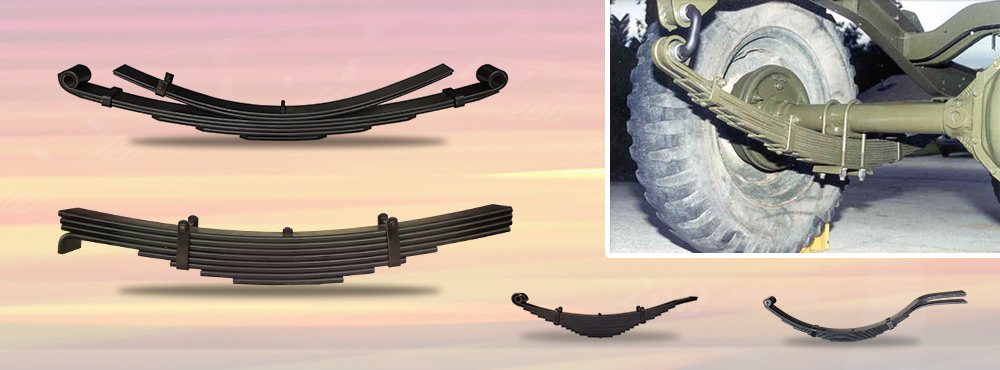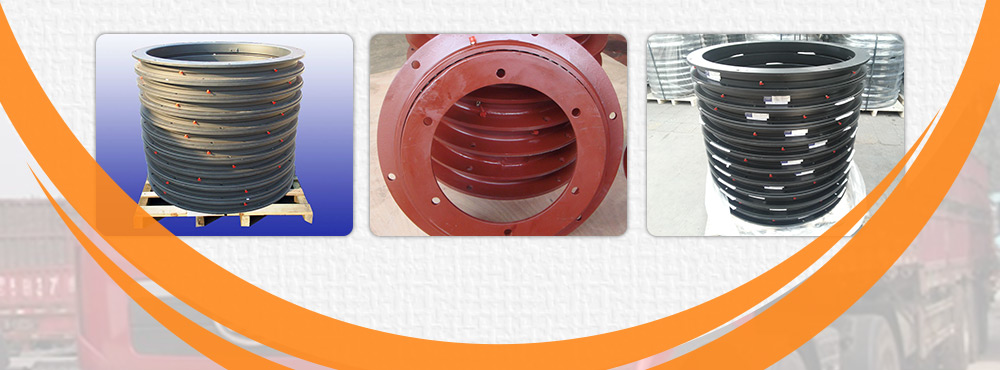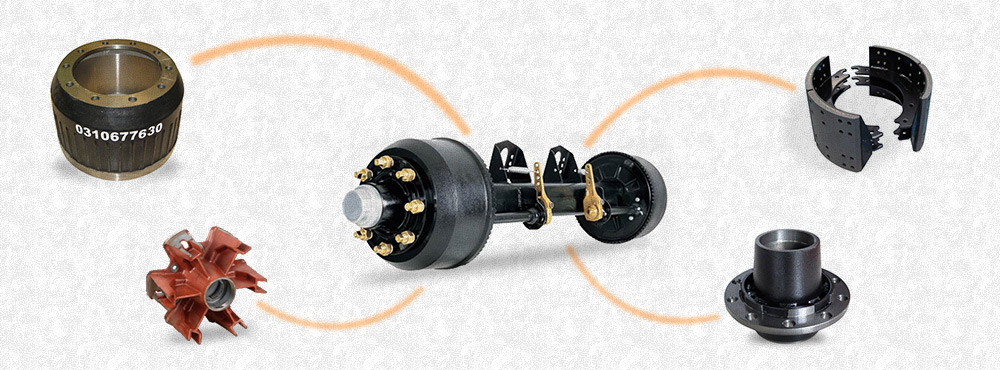CATEGORIES
LEAF SPRING
How to restore leaf spring suspension
Everything tends to get saggy with old age; some things need repairs while others need replacement. Leaf spring suspension, fortunately, can be repaired rather than replaced. This common type of suspension is often seen under various types of vehicles with straight- or live-axle rear ends. For this particular restoration, we’ll focus on an older Jeep Grand Wagoneer.It takes some effort for a set of springs to hold up a Wagoneer for 20 years or so, and by last year these leaf springs were getting so saggy they were almost flat. Leaf spring suspension doesn’t actually lose tension and become less springy, but it does rust away and become less strong as a result of supporting a great deal of weight over a long period of time. The springs can also get bent, particularly if the driver indulges in off-road driving fun.

These springs are 20 years old and have seen more than 120,000 miles of abuse, so finding flat and broken leaves was no surprise.
Steel base
There are two options for handling worn-out leaf springs. They either can be replaced, which can be pretty expensive for a set of four, or they can get overhauled, which is not too expensive. If you would rather not do the repairs on your own, look for a shop that specializes in springs and lift kits for trucks. One thing to bear in mind is that it might be easier to just cut off the nuts and bolts securing the springs if they’ve been connected for several years. If you want to remove eight ancient spring shackle nuts and bolts yourself, you’re looking at some major wrench action and a few cans of lubricant.This Wagoneer’s springs were in pretty bad condition, with a few leaves snapped and all of them bent out of shape. The shop technicians disassembled them one at a time, then straightened out the bent leaves on a press and made a few new leaves for replacing those that were broken. There was nothing high-tech about it. The shop had a supply of spring steel that the technician cut and trimmed to the right length. The spring was reassembled with a mix of old and new leaves.
Restoring leaf springs
After many years of making and repairing leaf springs, WONDEE AUTOPARTS technician can tell from looking at them how much bending leaf springs will need to get straightened out. When the springs are put together, the WONDEE technician can check them for the correct shape by putting a steel bar across the ends and measuring the spring height, although he or she will probably have a pretty good idea of what they should look like without measuring them. This seems an uncanny ability.
Here are the steps involved in restoring leaf springs:

Step 1: A hydraulic press bends the springs, in a gentle curve, back to their original shapes. It takes a few years of experience to judge where and how to apply the force.

Step 2: Snapped leaves are discarded and replaced. Then the right length of spring steel is cut off from stock.

Step 3: The ends of the new leaves are chamfered off to make them the same shape as the old leaves that are being replaced.

Step 4: A central hole is drilled next in the completed spring for locating the leaves on the spring and the spring to the axle.

Step 5: A bolt runs through the center of the spring and holds it all together.

Step 6: The height of the complete spring is measured now that the repaired spring’s parts are reassembled.

Step 7: Fresh clips secure the leaves so they remain pointing the right way and work as a stack.

related reading: WONDEEAUTO PRODUCTS














